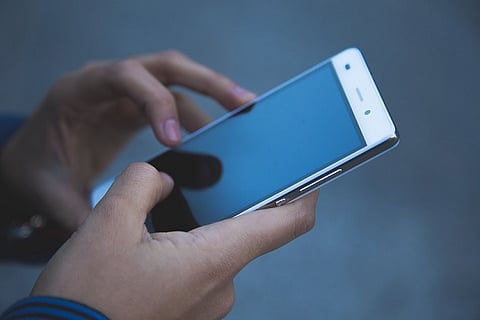

Your phone is dirty and is a breeding ground for germs.
Scientists at the National Centre for Cell Science (NCCS) in Pune have discovered three species of microbes- two bacteria and fungus- that grow on mobile phone screens, PTI reported.
For the research, the team collected samples from 27 mobile phone screens. They found 515 different bacterial types and 28 different fungi, including the three new species.
Praveen Rahi, one of the scientists on the team, said that these bacteria and fungi thrive on human bodies. But he points out they are friendly to humans.
Studies carried out earlier have found that smartphone and tablet screens carry more germs than a toilet seat.
A 2013 report by British watchdog Which? collected samples from 90 devices and found "hazardous" levels of bacteria that can make people sick, including E. coli, NYDailyNews reported.
The report said that this could be because of the busy lifestyle that people lead today with many carrying their cellphones to the loo. Phones also get hot and are we mostly hold it in our hands or keep it in bags and pockets. This too provides for suitable conditions for germ growth.
In another study in 2015, carried out by Dr. William DePaolo, assistant professor in the Molecular Microbiology and Immunology department of the University of Southern California, collected swabs from the phone screens of Buzzfeed employees to check for bacteria in comparison to a toilet seat.
They found that while the toilet had around 3 species of bacteria, the cellphones has on an average 10-12 species of bacteria.
The phone screens also had "worse types of bacteria" including E. coli and faecal bacteria.
Check out this video by Mashable which lists five objects that have less bacteria that your cellphone. FYI, there are about 25,000 germs on each square inch of your cellphone.
But is it at bad is sounds? Can these bacteria on your cellphone be really harmful and make you sick?
A report in Bustle states that the alarming studies claiming that cellphones are 10 times dirtier than the average toilet seat can be sometimes misleading. That is because the toilet seat may be an unfair comparison as it may after all may not be the dirtiest place in your house.
According to Dr Chuck Gerba, professor of microbiology at the University of Arizona, the toilet seat is one of the cleanest places in the house. Even cleaner than your chopping board.
"It's one of the cleanest things you'll run across in terms of micro-organisms. It's our gold standard - there are not many things cleaner than a toilet seat when it comes to germs," he told the BBC.
"Usually there are about 200 times more faecal bacteria on the average cutting board than on a toilet seat," he says.
Also, like Praveen Rahi of NCSS pointed out, not all the germs may be harmful.
This is not to say that all germs are harmless because some of them could be. So it is a good idea to keep your phone clean. Since you cannot dip it in water and soap, antibacterial wipes made specifically to clean electronics could come handy.
Another way to keep your phones clean, experts suggest, is by keeping your hands clean.
Not just phones, ATMs are quite dirty too
A research from last year found that the keypad of automated teller machines (ATM) may be loaded with bacterias from spoiled food to parasites that may also cause sexually transmitted disease (STDs). Automated teller machine (ATM) keypads represent a specific and unexplored microhabitat for microbial communities.
"Our results suggest that ATM keypads integrate microbes from different sources, including the human microbiome, foods, and potentially novel environmental organisms adapted to air or surfaces," said Jane Carlton, Professor at New York University, US.
"DNA obtained from ATM keypads may therefore provide a record of both human behaviour and environmental sources of microbes," Carlton added.
The researchers in June and July 2014 took swabs of keypads from 66 ATM machines from Manhattan, Queens, and Brooklyn, in the US.
Specifically, the most common identified sources of microbes on the keypads were from household surfaces such as televisions, restrooms, kitchens and pillows, as well as from bony fish, mollusks and chicken.
Residual DNA from a meal may remain on a person's hands and be transferred to the ATM keypad upon use, the researchers suggested.
ATM keypads located in laundromats and stores had the highest number of biomarkers with the most prominent being Lactobacillales (lactic acid bacteria), which is usually found in decomposing plants or milk products.
In other samples, the researchers observed the biomarker Xeromyces bisporus, which is associated with spoiled baked goods.
In addition, the team found a parasite typically seen in the gut of humans and other mammals, along with a species closely related to the human parasite Trichomonas vaginalis, which can potentially cause STD.
However, there is no significant difference was found in the keypads from ATMs located outdoors versus indoors, the researcher noted, in the paper published in the journal 'mSphere.'
IANS inputs